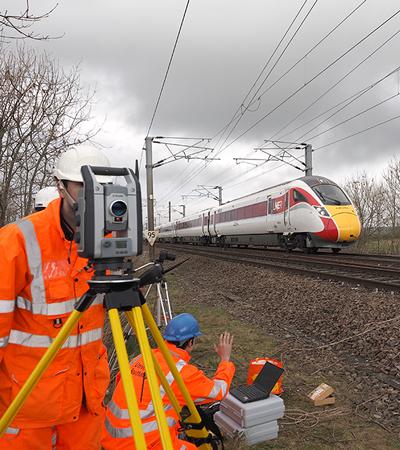Context
Rail is vital to a healthy, decarbonised inland surface transport system. It is far more energy efficient than road, even with mass electrification; the growth in use of passenger and freight rail is therefore key to meeting national carbon targets.
Research at the University of Southampton has contributed to improved design and maintenance of rail and other transport infrastructure systems, delivering significant cost savings and increasing reliability and capacity.
Enabling construction through groundwater control
Effective control of groundwater for deeper excavations and tunnels is crucial for reducing rail construction costs and protecting the environment and adjacent infrastructure.
Vacuum dewatering techniques developed by Professors William Powrie and David Richards have shaped design guidance on groundwater control published by the Construction Industry Research and Information Association (CIRIA). The techniques have been applied to Crossrail, HS2, the new River Humber gas pipeline and the Thames Tideway Super Sewer.
Improving performance of railway track systems
Southampton research has solved persistent, localised maintenance problems on HS1, which links London and the Channel Tunnel. For example, a single targeted intervention to install under-sleeper pads along five metres of track saved six times the investment in maintenance costs.
For HS2, Powrie chaired twelve design workshops with a view to ensuring the programme and its supply chain benefited from Southampton’s latest research in the areas of railway earthworks and retaining walls. This resulted in savings of around £100m for the HS2 programme.
The research was translated into the University’s 2016 publication, A Guide to Track Stiffness, which is used extensively in the maintenance, refurbishment and renewal of the UK rail network.
Ensuring economic design of noise mitigation measures
Until recently, noise from slab tracks was widely believed to be significantly greater than that from conventional ballasted tracks. Research by Professor David Thompson, Dr Xianying Zhang and Dr Giacomo Squicciarini demonstrated that the difference was smaller than previously understood. A requirement for noise mitigation measures on HS2 was subsequently reduced, saving £65m and reducing the risk of delay to the programme.
In collaboration with Deutsche Bahn and other European partners, the Southampton group developed a cost-efficient alternative to field tests for testing rail dampers. This reduced costs by about 90 per cent and the time required for the procedure from six months to one week. This opened the testing market to SMEs and removed the need for lengthy traffic restrictions resulting from installing dampers purely for testing purposes.
Railway overhead line equipment
Research by Richards, Powrie and Dr Anthony Blake allowed the rail industry to adopt a cost-efficient method for specifying overhead line equipment foundations. This enabled large savings in materials, programme time and carbon.
The method was translated into a new Network Rail specification and made mandatory for use on all their projects from March 2018. It saved an estimated £600m over the following three years, with associated research on reducing clearances from high voltage equipment saving an additional £50m. It has also reduced levels of embedded and emitted carbon.
Without the research, it was deemed ‘unlikely’ that two major electrification projects that had previously been suspended due to cost overruns would have restarted. The estimated cost to the economy of abandoning the Great Western Electrification Project and the Midland Main Line would have exceeded £5.5bn.
Infrastructure systems modelling
Research by Professor John Preston and Dr Simon Blainey from 2011 to 2018 provided insights into passenger demand for rail services and the pressure this is likely to place on infrastructure. It fed into the first ever National Infrastructure Assessment for the UK in 2018, which made recommendations to the government for how the identified infrastructure needs and priorities of the country should be addressed.

